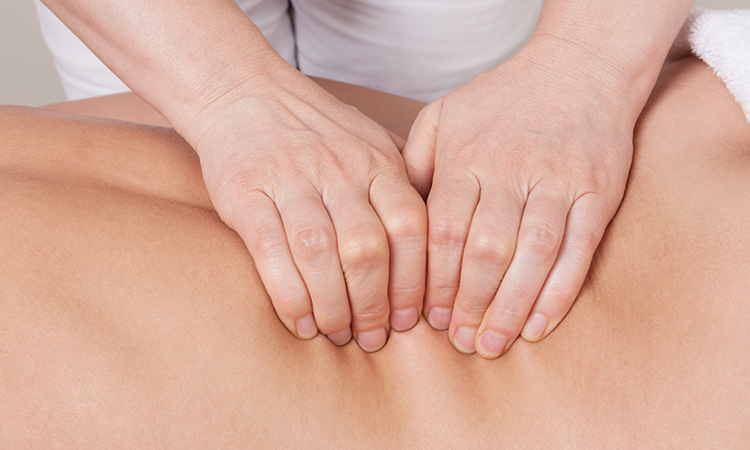Massages are techniques for manipulating the superficial and deep layers of the muscles. Based on this principle, multiple methods have been created with satisfactory results. Among these, deep tissue massage has rapidly gained popularity.
It is a series of therapeutic movements that aim to relax both the deepest surface of the muscle and the fascia, a thin envelope of connective tissue that encloses and holds each organ, bone, blood vessel, nerve fiber and muscle in place.
So the questions that arise is what are the benefits of these deep tissue massages. In what cases are they recommended and what are their contraindications? If you want an answer to all those questions, you’ve reached the right place as this is exactly what we are going to uncover in today’s article.
Benefits and Uses of Deep Tissue Massages
The benefits and uses of deep tissue massage are related. As stated in a study published in the Western Journal of Medicine, its main applications are associated with relaxation, muscle relief and anxiety reduction.
Pain Relief
Overloads are reduced with the above mentioned massage as it promotes the elimination of knots that appear in the muscles and connective tissue. This results in pain relief at least temporarily. It is recommended as a remedie for joint discomfort and all kinds of chronic muscular ailments.
Relaxation and Well-Being
Good muscle health translates into a state of mind of maximum relaxation. In this sense, deep tissue massage is beneficial because it stimulates the release of neurotransmitters that promote well-being.
In particular, it helps to increase the release of dopamine, serotonin and endorphins. Therefore, it can be used as a method of dissipating stress and anxiety. Deep tissue massages reduce tension and promote well-being in general.
Sports Performance
The absence of accumulated tension improves the range of motion of muscles during training. As a result, they improve the chances of losing calories and toning up. Research published in the North American Journal of Sports Physical Therapy suggests that massages help prepare athletes for competition by improving their performance. Massages also help you in recovery process after exercises and decrease the risk of injury.
Sleep Quality
Rest is the foundation for high performance the next day, regardless of the activity. In this regard, deep tissue massages can serve as a complement to promote deep, restful sleep. It reduces pain and inflammation in specific areas. It also increases serotonin secretion.
Relief from Injury
Deep tissue massages have the potential to alleviate inflammation and reduce pain from muscle injuries. Specifically, deep tissue massages help treat the following injuries:
- Tennis elbow
- Muscular contractions
- Lumbago
- Back pain.
- Cervical pain
How Does a Deep Tissue Massage Work?
The first step before the deep tissue massage is to identify the precise areas where the problem originates. Once this is done, the specialist will ask the person to lie on their stomach or back, depending on the area to be treated.
It begins with a warm-up sequence of light touching of the muscles. Once the adaptation phase is over, slow kneading (with thumbs, knuckles, elbows and forearms) and intense pressure – with some variability – to reach the desired depth begins,
The average duration of the massage varies between 60 and 90 minutes, which will depend on the level of accumulated tension and the location.
Finally, it is important to note that the perceived pressure is high and even higher than what one would feel with a Swedish massage for example. However, the sensation has a lot to do with the degree of sensitivity of the person.
Can It Hurt?
A deep tissue massage is performed with specific techniques and should not cause pain. Although, of course, the pressure that must be applied to loosen knots can be uncomfortable for some people.
The truth is that some discomfort may be lingering the next day. However, it does not reach the level of discomfort, and the reduction of problems in the treated muscles is almost immediate.
Contraindications and Recommendations
As far as contraindications are concerned, deep tissue massage should be avoided by people who have blood clots or are prone to their formation. Similarly, people who suffer from osteoporosis should first consult a physician to determine the feasibility of a massage with these characteristics.
Similarly, it is recommended that the deep tissue method be avoided on areas with the following conditions:
- Bruises
- Infections
- Skin rashes
- Tumors
- Abdominal hernia
Deep tissue massage is not indicated for pregnant women, but a medical specialist can suggest certain adaptations, depending on the case. Individuals who have recently undergone surgery or chemotherapy need the approval of qualified personnel to continue treatment. If the massage causes pain during and after its application, the procedure to follow is to report the type of discomfort felt in order to readjust or suspend the practice if necessary.
So now that you know more about deep tissue massages, what are your thoughts on them and have you decided to go for them? Let us know in the comments below.


